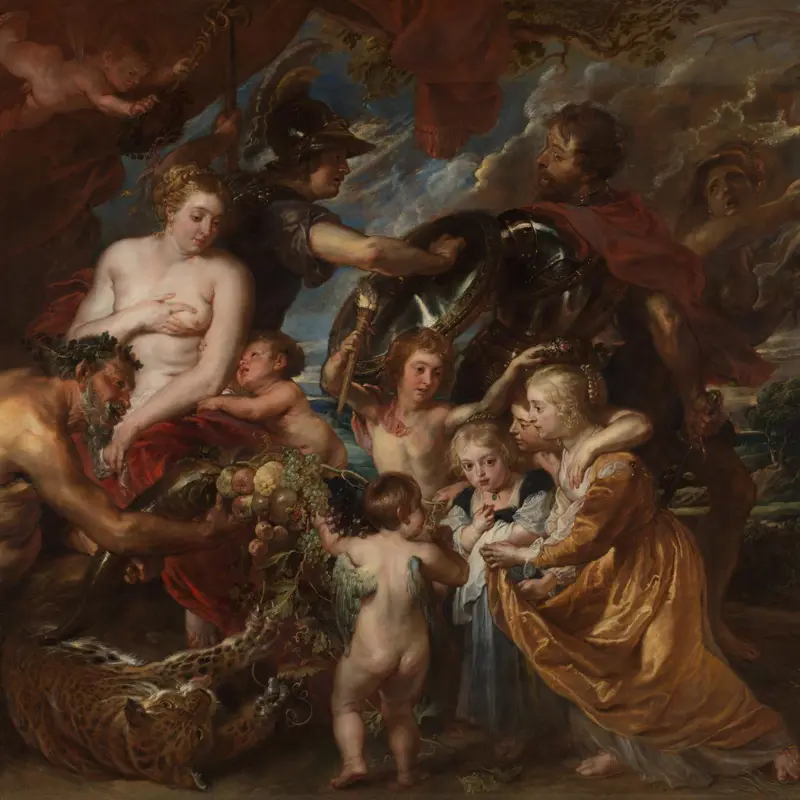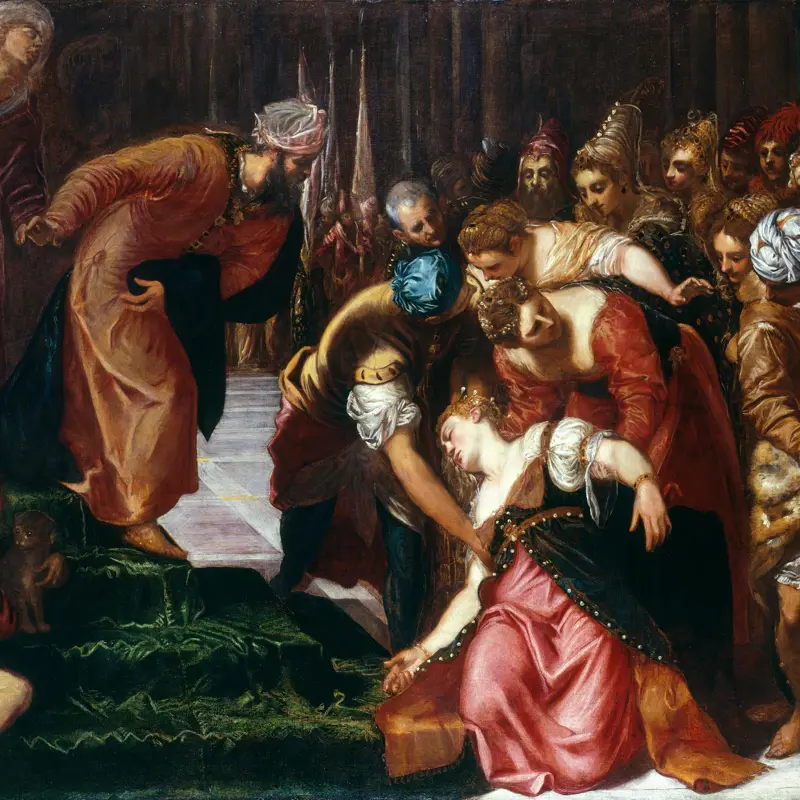Charles I (1600–1649), King of Great Britain and Ireland, and Henrietta Maria (1609–1669) were married in 1625. Over the following two decades they assembled one of the most celebrated collections of art in Europe. Paintings and sculptures were shipped to London from across the continent, with many Renaissance works, such as Correggio's School of Love, arriving from the Gonzaga collection in Mantua. In addition, they employed contemporary artists such as Anthony van Dyck (who was appointed court painter in 1632), Orazio Gentileschi and his daughter Artemisia.
During the English Civil War (1642–1651), Henrietta Maria went into exile in France and Charles I was captured, put on trial for treason and executed in 1649. Over the following months, their collection was sold and dispersed at the Commonwealth Sale.
Many works were retrieved when the monarchy was reinstated in 1660. Others – such as Rubens's Peace and War, Van Dyck's Equestrian Portrait of Charles I and Orazio Gentileschi's Finding of Moses (commissioned to commemorate the birth of Charles II) – now form part of the National Gallery Collection. They are reunited here with works from the Royal Collection, generously lent by His Majesty King Charles III.









